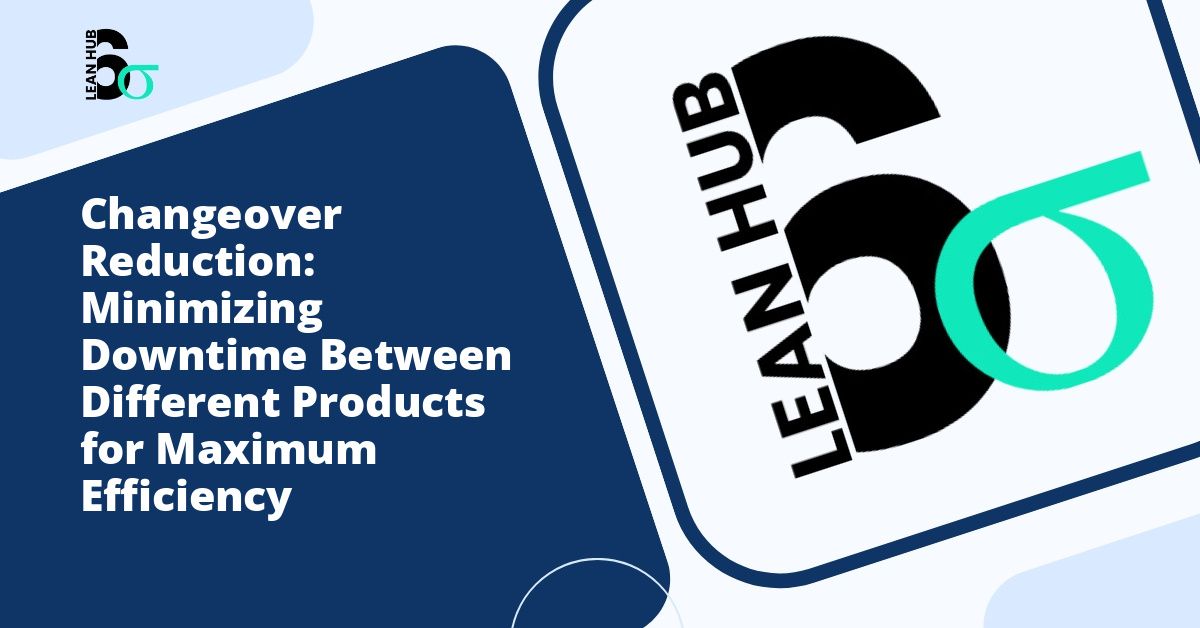In today’s competitive manufacturing landscape, every minute of production downtime translates directly into lost revenue and reduced competitiveness. One of the most significant sources of this downtime is the changeover process, the period between completing production of one product and starting another. Understanding how to minimize changeover time has become essential for businesses seeking to improve operational efficiency and maintain their market position.
Understanding Changeover and Its Impact on Production
Changeover, also known as setup time, refers to the entire process of converting a production line from manufacturing one product to another. This includes stopping the current production run, removing or adjusting equipment, cleaning machinery, installing new tools or fixtures, testing the setup, and producing the first acceptable piece of the new product. The cumulative time spent on these activities can represent a substantial portion of total production time, often ranging from 15% to 50% in traditional manufacturing environments. You might also enjoy reading about Constraint Management: Improving Bottleneck Performance in Your Organization.
The financial impact of extended changeover times extends beyond simple downtime costs. Longer changeovers encourage larger batch sizes to amortize setup costs, leading to increased inventory carrying costs, longer lead times, and reduced flexibility in responding to customer demands. This creates a ripple effect throughout the entire supply chain, affecting everything from cash flow to customer satisfaction. You might also enjoy reading about Standard Work in Six Sigma: Creating Consistent Processes That Deliver Results.
The Role of Lean Six Sigma in Changeover Reduction
The principles of lean six sigma provide a structured framework for addressing changeover challenges. This methodology combines lean manufacturing’s focus on waste elimination with Six Sigma’s data-driven approach to process improvement. When applied to changeover reduction, lean six sigma enables organizations to systematically identify, analyze, and eliminate sources of waste in the setup process. You might also enjoy reading about Pilot Testing in Six Sigma: How to Test Solutions Before Full Implementation.
The DMAIC framework (Define, Measure, Analyze, Improve, Control) serves as the backbone of lean six sigma changeover reduction initiatives. Each phase builds upon the previous one, creating a comprehensive approach to sustainable improvement. By following this structured methodology, organizations can achieve dramatic reductions in changeover time while ensuring that improvements are maintained over the long term.
The Recognize Phase: Foundation for Improvement
The recognize phase, often considered the precursor to formal improvement efforts, involves acknowledging that changeover time represents a significant opportunity for improvement. This critical first step requires organizations to shift their mindset from accepting extended changeovers as inevitable to viewing them as wasteful activities that can and should be minimized.
During the recognize phase, leadership and team members must come together to identify where changeover issues exist within their operations. This involves honest assessment of current practices, documentation of actual changeover times, and acknowledgment of the gap between current performance and best practices or theoretical minimums. Without proper recognition of the problem’s scope and impact, organizations struggle to allocate adequate resources or generate sufficient commitment for improvement initiatives.
Key Strategies for Changeover Reduction
Single-Minute Exchange of Die (SMED)
Perhaps the most influential methodology for changeover reduction is SMED, developed by Japanese industrial engineer Shigeo Shingo. The goal of SMED is to reduce changeover times to single-digit minutes, though the principles apply regardless of current changeover duration. The methodology distinguishes between internal setup activities (which can only be performed when the machine is stopped) and external setup activities (which can be performed while the machine is still running).
Implementing SMED involves several key steps:
- Observing and documenting the current changeover process in detail
- Separating internal and external setup activities
- Converting internal setup activities to external ones wherever possible
- Streamlining all aspects of the setup operation
- Eliminating adjustment processes through standardization
Standardization and Documentation
One of the most powerful yet frequently overlooked aspects of changeover reduction involves creating standardized work procedures. Many organizations suffer from variation in changeover performance simply because different operators follow different methods. By documenting best practices and creating visual work instructions, companies ensure that every changeover is performed optimally.
Standardization extends beyond written procedures to include physical organization of tools, parts, and materials. Implementing shadow boards, color coding, and designated storage locations eliminates time wasted searching for required items. This organization should follow the 5S methodology (Sort, Set in Order, Shine, Standardize, Sustain) to create an environment conducive to rapid changeovers.
Quick-Change Technology and Equipment Modification
Strategic investment in quick-change technology can dramatically reduce changeover time. This includes implementing quick-disconnect fittings, adjustable jigs and fixtures, automated positioning systems, and modular tooling. While these solutions require upfront capital investment, the return on investment often materializes quickly through increased productive capacity.
Equipment modifications need not always be expensive or complex. Simple improvements such as adding handles for easier removal, implementing spring-loaded positioning pins, or creating adjustable stops can yield significant time savings. The key is approaching equipment design with changeover efficiency as a primary consideration rather than an afterthought.
Building a Culture of Continuous Improvement
Sustainable changeover reduction requires more than implementing new procedures or purchasing equipment. It demands creating a culture where continuous improvement becomes embedded in daily operations. This cultural transformation begins with leadership commitment and extends through all levels of the organization.
Operators and technicians who perform changeovers daily possess invaluable knowledge about improvement opportunities. Organizations that create channels for frontline employees to contribute ideas and participate in improvement activities tap into this knowledge base. Regular kaizen events focused on changeover reduction provide structured opportunities for cross-functional teams to collaborate on improvements.
Measuring and Sustaining Results
Effective changeover reduction initiatives rely on robust measurement systems to track progress and identify areas requiring additional attention. Key metrics include actual changeover time, percentage of time spent on various changeover activities, first-piece quality rates, and overall equipment effectiveness. These metrics should be visible to all team members and reviewed regularly.
Sustaining improvements requires establishing control mechanisms that prevent backsliding to old practices. This includes regular audits of changeover procedures, ongoing training for new team members, and periodic reassessment of improvement opportunities. Organizations should view changeover reduction not as a one-time project but as an ongoing journey toward operational excellence.
Real-World Impact and Benefits
Companies that successfully implement changeover reduction strategies typically experience benefits extending far beyond simple time savings. Reduced changeover times enable more frequent production runs of smaller batch sizes, dramatically reducing inventory levels and associated carrying costs. This increased flexibility allows manufacturers to respond more quickly to customer demands and market changes.
Quality often improves as well, as shorter changeovers mean less time for processes to drift out of specification between adjustments. The reduction in complexity associated with streamlined changeover procedures also reduces the likelihood of setup errors. Additionally, the morale boost that comes from working in a well-organized, efficient environment should not be underestimated.
Conclusion
Changeover reduction represents one of the highest-impact opportunities for operational improvement in manufacturing environments. By applying lean six sigma principles, beginning with proper recognition of the opportunity, and implementing proven methodologies like SMED, organizations can achieve dramatic reductions in downtime while simultaneously improving quality, flexibility, and employee engagement. The journey requires commitment, discipline, and continuous effort, but the rewards in terms of competitive advantage and financial performance make it an essential pursuit for any organization serious about operational excellence. As manufacturing continues to evolve toward greater customization and shorter lead times, the ability to perform rapid changeovers will increasingly separate industry leaders from those struggling to keep pace.








